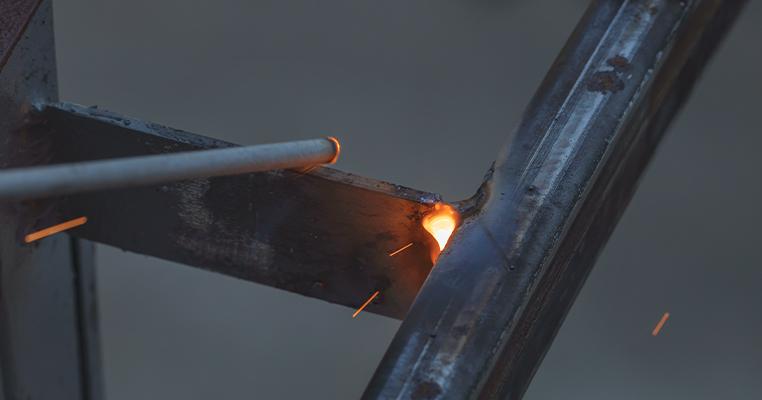Welding rod coating thickness
The coating thickness of the welding rod has an important influence on the welding process and the performance of the welded joint. Different welding rod coating thicknesses may cause different quality problems in the welding process, such as pores, inclusions, cold cracks, etc., which will seriously affect the performance of the welded joint.
The influence of different thicknesses of welding rod coating on welding
Thin coating welding rod
The thickness of thin coating welding rod is usually below 5μm. This kind of welding rod has little effect on welding and basically has no effect on the welded joint. Therefore, if it is a component of welding thin coating welding rod, welding is easy to achieve and will not have a negative impact on the quality of the finished product.
Medium and thick coating welding rod
The thickness of medium and thick coating welding rod is generally 5-15μm. This kind of welding rod has a greater impact on welding. It is easy to produce quality problems such as pores and inclusions during welding, and even cracks may occur. Therefore, when welding components of medium and thick coating welding rods, it is necessary to strengthen the supervision and quality control of the welding procedure to avoid poor welding and ensure the quality of the welded joint.
Thick-coated welding rods
The thickness of thick-coated welding rods is generally above 15μm. This type of welding rod has the most significant effect on welding. Porosity, inclusions, cracks and other phenomena are prone to occur during welding, which has a great impact on the performance of the welded joint. This phenomenon is common in welding thick-walled nickel-plated plates and pipes. Reasonable welding procedures and techniques need to be adopted to avoid affecting the quality of the product.
Detection of welding rod coating thickness
The detection of welding rod coating thickness is an important link to ensure welding quality. Detection methods include non-destructive methods and destructive methods. Non-destructive methods include weight method, magnetic method, eddy current method, R-ray reflection method, x-ray fluorescence method, mechanical measuring tool method, etc.; destructive methods include dissolution method, liquid flow method, drip coulometric method, metallographic microscope method, profilometer method, interference microscope method, etc. These measurement methods have their own characteristics and limitations and cannot replace each other.

Conclusion
The selection and control of welding rod coating thickness are crucial to the welding process and the quality of welded joints. Correct welding procedures and reasonable coating thickness can effectively avoid welding defects and improve welding efficiency and product quality. At the same time, regular testing of electrode coating thickness can promptly detect and solve problems and ensure the safety and reliability of welding operations.
-
What is a medium-frequency pulse? What types of welding are suitable for?ข่าวNov.24,2025
-
Why is the overall cost of CO2 welding lower than that of shielded metal arc welding?ข่าวNov.21,2025
-
Welding Knowledge 6ข่าวNov.20,2025
-
What is a low-frequency pulse? What types of welding are they suitable for?ข่าวNov.19,2025
-
Why are the weld joints from CO₂ gas shielded welding of such high quality?ข่าวNov.18,2025
-
J506 Welding Rod - Low Hydrogen, All-Position, AC/DC E7016ข่าวNov.17,2025


